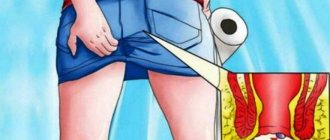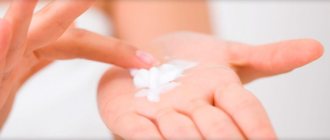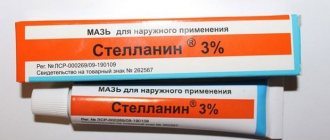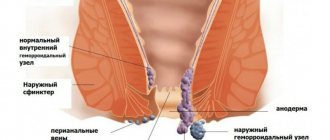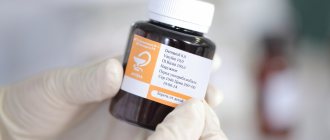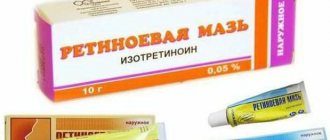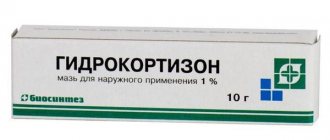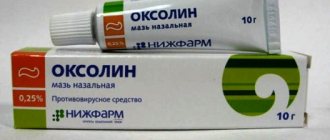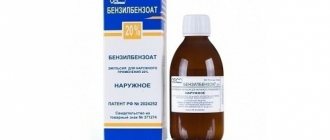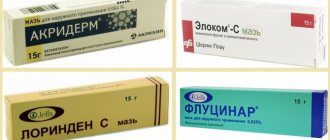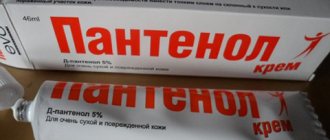Usage
In therapeutic practice, the drug is widely used. It may be prescribed in the following cases:
- skin inflammation due to chemical exposure;
- frostbite;
- physical inflammation;
- burns;
- seborrhea;
- trophic ulcers;
- lichen (flat, warty, pink);
- eczema;
- conjunctivitis;
- allergies;
- blepharitis.
Types of blepharitis
The list of diseases can be continued - only the most famous and common ones are given here.
Eye ointment, 2.5%
Table. Application for specific diseases.
| Skin ointment | Eye ointment |
| Autoimmune psoriasis. Non-microbial scleroderma. Systemic lupus erythematosus. Contact dermatitis. Allergic dermatitis. Neurodermatitis. Neuroallergic eczema. Skin burns. Frostbite of the skin. Ulceration of the skin layer with trophic ulcers. | Allergenic conjunctivitis. Inflammation of the eyelid - bepharitis. The process of infection in the cornea is keratitis. Inflammation simultaneously on the skin of the eyelid and the mucous membrane of the eye - blepharoconjunctivitis. The inflammatory form of iris damage is iritis. The iris is inflamed along with the ciliary body - iridocyclitis. Eye burn (of any origin). |
Chemical burn to the eye
Application of ointment
- First, it is very important to begin use only after it has been approved by a doctor. The course of drug therapy in the case of hydrocortisone ointment usually lasts no longer than two weeks, but with a deep nature of the damage, intensive dynamics, based on necessity, treatment can be extended for up to twenty days.
- Secondly, it is important to follow the instructions and apply the medicine strictly in accordance with it. This means that the ointment is applied twice or thrice a day. It is not applied to the covers in a thick layer (about a millimeter), only to the designated area. When using an eye product, it is placed into the conjunctival sac up to two times a day (can be once). In this case, an occlusive dressing is applied.
- Thirdly, in no case should you extend the use after the prescription has expired. This is a hormonal formation that, if exposed for too long, will cause reverse and side effects instead of promoting healing of the affected areas.
Correct application of ointment
When used therapeutically, the medicine copes well with all the tasks assigned to it: relieves itching and stops the inflammatory process, reduces swelling, reduces redness and exfoliates the affected skin layer. But with prolonged use (longer than the period prescribed by the doctor), it can seriously reduce immune function.
How to put ointment in eyes
Hydrocortisone ointment: instructions for use, reviews
The active substance of the hormonal drug Hydrocortisone ointment is a glucocorticosteroid that has an anti-inflammatory, anti-allergic, anti-edematous effect, and also eliminates itching of the skin.
The product is used externally and has a number of side effects that everyone should be aware of.
Pharmacological action of the drug
The active ingredient of the product is a synthetic analogue of adrenal hormones. The ointment is available in two versions - for the eye with a concentration of 0.5% and for use on the skin - 1%.
The drug relieves the inflammatory reaction in the skin by reducing the migration of lymphocytes and leukocytes in the affected area and suppressing the production of prostaglandins - direct participants in inflammation and pain.
The next pharmacological effect of Hydrocortisone ointment is to eliminate itching and have an anti-exudative effect.
The product reduces collagen production and blocks fibroblast activity. Due to this, the risk of developing scars in the area of inflammation and proliferation of connective tissue, for example, with psoriasis, is reduced.
Hydrocortisone ointment is effective for quickly eliminating swelling in acute allergic reactions. The drug retains moisture in the skin and has a keratolytic (softening) effect, so its use is effective for dry psoriatic and eczematous lesions.
After application, hydrocortisone accumulates in the granular layer of the epidermis, and here, and later in the liver, its metabolism (decomposition) begins. The substance is excreted with bile through the intestines and urine.
What is Hydrocortisone ointment used for?
The drug is used for local treatment of inflammatory and allergic skin pathologies. The instructions for use of Hydrocortisone ointment indicate the following indications:
- psoriatic lesions;
- contact and allergic dermatitis;
- eyelid pathologies (blepharitis, conjunctivitis, keratoconjunctivitis, dermatitis);
- neurodermatitis;
- pruritus;
- lichen planus verrucous;
- seborrhea;
- different forms of eczema.
See our review of hormonal and non-hormonal ointments for psoriasis.
Hydrocortisone ointment - Instructions for use
Instructions for use of hydrocortisone ointment
Apply a thin layer of ointment to the skin 2-4 times a day and rub in gently. If inflammatory infiltration occurs, then the product is used with an occlusive dressing - this is a hermetically sealed insulation of the skin from moisture and air.
The duration of the treatment course is 1-2 weeks, it can be changed at the discretion of the doctor depending on the severity and type of disease.
In the treatment of blepharitis and other eye diseases, 3 to 5 times a day, Hydrocortisone ointment is placed behind the lower eyelid, squeezing 1 cm of the product out of the tube. During application, you need to tilt your head back and then close your eyes.
If the ointment is injected into the conjunctival area, it is important to be careful not to touch the mucous membrane with the tube's nose.
A combination such as ultrasound with hydrocortisone ointment is often used.
This procedure is called phonophoresis; it is effective in the treatment of post-burn scars, neuralgia, articular and gynecological pathologies, muscle atrophy, trophic ulcers, varicose lesions, diseases of the ENT organs, fractures of long bones and painful injuries.
Hydrocortisone ointment for wrinkles
There are several theories of aging, and one of them says that age-related skin changes are caused by a decrease in the production of steroid hormones in the adrenal cortex. In this regard, many people are wondering whether it is possible to use Hydrocortisone ointment for wrinkles?
The fight against skin aging and anti-aging care require regularity, so the use of hydrocortisone for this purpose is not only unjustified, but also risky.
Using the ointment for 1-2 weeks will give a short-term effect, and a long period of use is fraught with at least an increase in wrinkles, and in the worst case, skin atrophy, disruption of internal organs, diabetes and other systemic and endocrine problems.
To prolong youth, it is better to choose an integrated approach, including facial massage, the use of oils and special cosmetic creams, proper nutrition and taking vitamins.
Hydrocortisone ointment for children
For children, hydrocortisone ointment can be used starting from the age of two, but only as directed and under strict medical supervision. The duration of the course is also determined only by the doctor.
When applying the ointment, do not apply fixing or warming bandages, that is, it is unacceptable to enhance the absorption of hydrocortisone. Children under 12 years of age should not apply the product to the anus.
Children are often prescribed antibiotic or antifungal medications along with this drug. If within a week treatment with Hydrocortisone ointment does not bring results or at least relief, you should stop using it and consult a doctor.
In childhood, suppression of the activity of the adrenal cortex and the production of growth hormones develops faster than in adults, so the use of any hormonal agents should be carried out carefully.
Hydrocortisone ointment - analogues
List of analogues of Hydrocortisone ointment:
- Hydrocort;
- Courtade;
- Highton;
- Lokoid;
- Laticort;
- Hydrocortisone Nycomed;
- Akortin.
Side effects
If the drug is used as prescribed by a doctor and in strictly recommended dosages, it does not cause suppression of the endocrine system and the development of complications. Otherwise, there is a high risk of developing allergic reactions.
With long-term use, the side effects of Hydrocortisone ointment can be systemic due to disruption of the pituitary gland, adrenal cortex and hypothalamus.
Local side effects:
- from the skin - atrophy, stretch marks, fungal skin infections, acne, pigmentation disorders, hemorrhages and slow healing of wounds and injuries;
- from the eyes - cataracts, deterioration or loss of vision, secondary eye infections, increased intraocular pressure.
Systemic disorders:
- diabetes;
- osteoporosis due to calcium leaching;
- cramps and muscle pain, heart failure due to potassium leaching;
- swelling due to sodium and water retention in the body;
- obesity;
- weakened immunity;
- excessive sweating;
- problems with digestion and liver function, steroid stomach ulcer;
- hypertension, thrombosis, tachycardia (accelerated heart rate).
Contraindications
The drug should not be used in case of individual intolerance to hydrocortisone and other glucocorticoids. Hydrocortisone ointment is also contraindicated for:
- syphilis rashes;
- tuberculosis of the eyes and skin;
- in the period after vaccination;
- skin cancer;
- under two years of age;
- viral, fungal and bacterial infections of the eyes and skin;
- impaired integrity of the skin (ulcers, wounds, abrasions) or eye epithelium;
- perioral dermatitis;
- acne vulgaris and rosacea;
- trachoma.
Storage
Hydrocortisone ointment should be stored in a place protected from children and animals at an air temperature of 10-20°C. The shelf life of the drug is 3 years.
(Visited 89,531 times, 5 visits today)
- Author: Administrator
Tags: dermatitis psoriasis eczema
medknsltant.com
Contraindications and side effects
Side effects are mainly associated with prolonged and uncontrolled use of the ointment. After a temporary overdose, patients begin to experience the following problems.
- Steroid type diabetes. This side effect results in an increase in glucose content in the blood system, since one of the functions of glucocorticosteroids is the synthesis of glucose, which occurs due to the breakdown of protein compounds and glycogen.
- Atrophy of the adrenal cortex is possible and the adrenal glands stop synthesizing their hormones.
- In children, growth disturbances occur and osteoporosis can be diagnosed (up to the age of one and a half years, growth disturbances are reversible, after which they are not).
- Lack of calcium leads to various types of diseases. The removal of calcium from bone tissue occurs due to the retention of sodium ions to compensate for their excess in the plasma.
What does excess or deficiency of calcium lead to in the human body?
All of these effects do not occur in every patient who uses the ointment for longer than the recommended period, they are even infrequent, but, nevertheless, their severity should force patients to carefully handle this medicine. It is also important to take into account the possibility of side effects that may occur in patients with increased individual sensitivity. This is increased swelling, the occurrence (or persistence) of itching, skin atrophy, redness, hypertrichosis and other changes in the condition of the skin.
The drug has its own contraindications and side effects
Hydrocortisone IV and IM is contraindicated for:
- increased sensitivity;
- severe course of hypertension;
- Itsenko-Cushing's disease;
- jade;
- epilepsy;
- peptic ulcer;
- acute psychosis;
- osteoporosis;
- peptic ulcer;
- active forms of tuberculosis;
- diabetes mellitus;
- renal failure;
- AIDS;
- systemic mycoses;
- post-vaccination period;
- up to 1 year of age.
This form of release is contraindicated during pregnancy.
Local use of ointment is contraindicated for:
- bacterial skin diseases;
- viral and fungal skin lesions;
- manifestations of syphilis;
- skin tuberculosis;
- ulcers and skin wounds;
- skin tumors;
- rosacea;
- perioral dermatitis;
- acne vulgaris;
- post-vaccination period;
- under 2 years of age.
Prescribed with caution for diabetes mellitus and systemic tuberculosis. Use with caution on the skin of the face due to the possibility of side effects (telangiectasia, atrophy, perioral dermatitis), even after short-term use. To prevent infectious skin lesions, hydrocortisone ointment is recommended to be prescribed in combination with antibacterial and antifungal agents.
Eye ointment is not prescribed for:
- viral eye diseases;
- violation of the integrity of the cornea;
- tuberculosis, purulent and fungal eye infections;
- during vaccination;
- trachoma.
During pregnancy, local use is possible as prescribed by a doctor, if the expected effect exceeds the risk of possible complications for the fetus. The duration of use in pregnant women should not exceed 7–10 days.
Hydrocortisone in ampoules with intramuscular and intra-articular administration can cause:
- sodium and fluid retention;
- loss of potassium;
- congestive heart failure;
- heart rhythm disturbance;
- hypokalemic alkalosis;
- steroid myopathy;
- necrosis of the heads of the humerus and femurs;
- osteoporosis and pathological fractures;
- ulcerative lesions of the gastrointestinal tract;
- pancreatitis;
- petechiae and ecchymoses;
- increased intracranial pressure;
- mental disorders;
- convulsions;
- immunosuppression;
- menstrual irregularities;
- growth suppression in children;
- Itsenko-Cushing syndrome.
To reduce adverse reactions, a diet rich in potassium and limited in sodium is prescribed. Control blood pressure, blood sugar and clotting.
External use of Hydrocortisone ointment can cause:
- irritation at the site of application of the drug;
- hyperemia;
- burning;
- itching and dryness;
- striae;
- skin depigmentation;
- swelling;
- atrophic changes;
- hypertrichosis;
- acne-like rash;
- secondary infectious lesions;
- telangiectasia.
With long-term use over large areas, systemic undesirable effects may occur as a manifestation of the resorptive effect of the drug (suppression of the adrenal cortex, hyperglycemia, Cushing's syndrome, glycosuria). To prevent infectious skin lesions, combination with antibacterial agents is necessary.
Hydrocortisone POS eye ointment, which has a higher content of active substance, causes:
- burning;
- redness of the sclera;
- dermatoconjunctivitis;
- eczema of the eyelids;
- secondary steroid glaucoma (with long-term use);
- exophthalmos;
- cataract;
- perforation of the cornea (if its integrity is violated);
- addition of a secondary infection.
In this regard, the ointment can be used for up to 2 weeks.
Contraindications
Since hydrocortisone ointment is a hormonal agent, contraindications should be taken very seriously. Corticosteroids are effective against many diseases, but they also have a large number of side effects. Contraindications to Hydrocortisone include if a person has:
- atrophy of the skin;
- trachoma or glaucoma;
- eye diseases of a tuberculous, viral, fungal nature;
- medical prohibition on the use of hormonal drugs;
- open wounds;
- damaged membrane of the eyes;
- sensitivity to ointment components.
Doctors do not recommend using the drug for children under 18 years of age. The product is absolutely contraindicated for newborns under 2 years of age. The combination of medications must be treated very carefully, since the hormonal drug is not compatible with all medications. Prolonged or uncontrolled use of hydrocortisone ointment can lead to side effects such as hypertrichosis, hypercorticism, or the development of re-infection.
- Ultrasound of the vessels of the head and neck: what the diagnostic method shows
- How does castration of a cat occur?
- How to lose weight with flax seeds
Reviews of Hydrocortisone
Apply a thin layer to the affected areas of the skin 2-3 times a day. The duration of treatment is 6-14 days, and if the course is persistent, it is extended to 20 days. For hypertrophic manifestations, they are used under occlusive dressings, which are changed after 24-48 hours. If after a week of treatment there is no improvement, the use of the drug is stopped and further treatment is agreed with the doctor.
In children, suppression of the adrenal cortex develops more quickly, and the production of growth hormone is also reduced. Therefore, it is prescribed to children only under medical supervision. When used in children 1 year of age, limit the duration of treatment and do not use occlusive dressings. In cases where it is necessary to apply ointment to the face area under a bandage, the duration of treatment is limited to two weeks.
Unlike ointment, 1% cream (Nycomed) can be used for sunburn, photodermatitis and diaper rash in children. Can be used on the face.
Eye ointment is placed in the conjunctival sac behind the lower eyelid, and a 1-2 cm strip of ointment is applied 3 times a day. After the procedure, carefully close your eyes. The duration of treatment is up to two weeks and can be extended only as prescribed by a doctor.
Do not allow the tube to come into contact with the surface of the conjunctiva of the eye. Do not use contact lenses during treatment. When using drops simultaneously, the ointment is applied 15 minutes after instillation. When using the ointment for more than 2 weeks, intraocular pressure should be monitored.
Before use, shake the contents to obtain a homogeneous suspension. Hydrocortisone in ampoules is injected deep into the gluteal muscle 50-300 mg, maximum 1000-1500 mg per day. For life-threatening conditions, 150 mg is administered every 4 hours for the first two days, then after 8 hours. Children are prescribed 1-2 mg per kg of weight every 4 hours, the daily dose is up to 6-9 mg per kg of weight.
Adults and children over 14 years of age are given 5-50 mg into the joint cavity, and younger children 5-25 mg once a week. The course of treatment is 3-5 injections. The action begins within 6-20 hours and lasts several days or weeks.
Hydrocortisone Richter suspension containing hydrocortisone and lidocaine is injected only periarticularly or into the joint cavity. Adults 5-50 mg. A single dose for children aged 3 months to 1 year with periarticular administration is 25 mg, up to 6 years - 25-50 mg, 6-14 years - 50 mg.
Repeated administration is carried out after 3 weeks. It is injected into the same joint no more than 3 times a year, since it has an adverse effect on hyaline cartilage. For tendonitis, the injection is made into the tendon sheath (it cannot be injected into the tendon).
Lyophilized hydrocortisone hemisuccinate powder is dissolved in the supplied diluent and administered intravenously or intramuscularly. In acute conditions, intravenous hydrocortisone is prescribed. At the beginning, a dose of 100 mg is administered over 30 seconds, then within 10 minutes it is increased to 500 mg (according to the severity of the condition).
The injections are repeated every 2-6 hours. High doses are prescribed until the condition stabilizes (usually 48-72 hours). The daily dose is 1000-1500 mg. Typically, 2/3 of the dose is administered in the morning, and 1/2 in the afternoon. If long-term corticosteroid therapy is necessary, switch to another drug that does not cause sodium retention. The dose for children is at least 25 mg per day.
Hydrocortisone sodium hemisuccinate powder, which is highly soluble in water, can be used for inhalation using a nebulizer. Technically this is feasible, but the action will not be local, but systemic. This must be taken into account, especially when inhalations with hydrocortisone are performed for children; the daily dose in this case should not exceed 25 mg of the drug. Do inhalation in the morning and evening, no more than 5 days.
Physiotherapeutic local treatment with hydrocortisone gives good results, increases efficiency and is often used in the complex treatment of many diseases.
Ultrasound has a pronounced analgesic, antispasmodic and anti-inflammatory effect, stimulates blood circulation, improves trophism. As a result, the consequences of hemorrhages, infiltrates, traumatic edema and exudates resolve faster. During ultrasound therapy, ointment or gel based medications are additionally used.
Their use allows you to achieve therapeutic concentration in the problem area. A moving technique is used: the area is lubricated with 1% ointment and, pressing the vibrator head tightly, move it in a circle or in the longitudinal direction. Before starting the procedures, it is necessary to take into account contraindications for ultrasound with Hydrocortisone:
- systemic skin diseases;
- pustular lesions at the site of the procedure;
- skin cancer;
- psychoneuroses;
- pregnancy (second half);
- arterial hypertension stage III;
- severe atherosclerosis;
- heart rhythm disturbances;
- arterial hypotension;
- frequent attacks of angina pectoris;
- thyrotoxicosis;
- osteoporosis;
- complicated peptic ulcer;
- complicated myopia;
- severe diabetes mellitus.
From a technical point of view, the procedure differs little from ultrasound exposure. With phonophoresis, using high-frequency ultrasonic vibrations with an intensity of 800 to 3000 kHz, the medicinal substance is also injected into the damaged area. In this case, a suspension of hydrocortisone 5 ml, petroleum jelly and lanolin 25 g each is used.
It is used for arthrosis, prostatitis, neuritis of the facial nerve, neurodermatitis, adnexitis, vulvar itching, and sinusitis. A noticeable effect is observed after 5-6 procedures, and a lasting effect is observed after completing the full course.
Contraindications to phonophoresis with hydrocortisone include:
- severe hypertension;
- heart failure;
- heart rhythm disturbance;
- thyrotoxicosis;
- peptic ulcer;
- severe diabetes mellitus;
- vibration disease;
- osteoporosis;
- bronchiectasis;
- complicated myopia;
- syringomyelia.
It is worth considering general contraindications for physical procedures: cancer, bleeding, pregnancy.
Electrophoresis
This is a method of influencing the body with direct current and medicinal substances administered with its help. The active electrode of the device affects the problem area, and the indifferent electrode is in the patient’s hand. During the procedure, the drug is used in ampoules.
Indications for hydrocortisone electrophoresis include:
- rheumatic diseases;
- injuries;
- arthrosis;
- bursitis and tendovaginitis;
- dermatological diseases and their consequences in the form of scars (the external condition of the skin improves, scars are almost completely eliminated).
Ointments and creams containing corticosteroids have antiallergic, anti-inflammatory and antipruritic effects. What is Hydrocortisone ointment for and for what skin diseases is it used? This is primarily eczema, neurodermatitis, psoriasis, itchy and allergic dermatoses, skin manifestations of lupus erythematosus.
Reviews of Hydrocortisone ointment are most often positive, and this applies to people who tried to use hormonal ointment for the first time. Those who have extensive experience in using hormone-based ointments say that prednisolone is significantly superior in anti-inflammatory activity to hydrocortisone, and also retains water to a lesser extent in the body.
And ointments containing dexamethasone and betamethasone are even more active. Hydrocortisone and prednisolone belong to the first generation of corticosteroids, which are relatively weakly active substances. Ointments and creams with these substances are used in pediatric practice, in addition, they can be applied to the skin of the face.
Judging by the reviews, for any form of eczema, treatment began with the use of this ointment; in case of an unexpressed effect, more potent agents were used - Fluorocort or Polcortolone. Skin atrophy, acne, hypopigmentation, and striae are common local adverse reactions of corticosteroids that occur on the face and groin area, so low-potency corticosteroids should be used in these areas.
What else can the ointment be used for? It is used in physiotherapeutic procedures, for example, in the treatment with ultrasound of diseases of the joints and spine, scar contractures, heel spurs. Under the influence of ultrasound, exudates are absorbed, analgesic, anti-inflammatory and vasodilating effects are manifested.
Phonophoresis using a suspension has a similar effect. Almost everyone who underwent treatment left positive reviews about phonophoresis with hydrocortisone. High efficiency, rapid disappearance of pain and recovery were noted. This procedure was prescribed after gynecological diseases, as well as for sinusitis. Some patients noted an exacerbation after the first sessions.
Information has appeared on the Internet about the use of this ointment for wrinkles. What is this based on and is it harmful to use the ointment for this purpose? Topical application of hydrocortisone causes fluid retention and some swelling, which hides wrinkles and makes them visually invisible. But this is a temporary effect; after the “procedures” are stopped, the liquid is lost and the wrinkles appear again.
Doctors are categorically against the use of hydrocortisone for cosmetic purposes. First of all, it is a hormonal drug that has a systemic effect on the body (in the form of changes in metabolic processes) and a local effect - skin atrophy, it becomes thinner and the aging process accelerates. In addition, hormonal ointment causes skin addiction and a decrease in effect when applied topically.
Considering the contraindications and possible complications, isn’t the price of such imaginary rejuvenation too high? Hydrocortisone ointment and eye ointment should be prescribed only by a doctor according to strict indications; you cannot treat them yourself. Eye ointment was prescribed to patients with keratitis, chemical burns and after surgical interventions.
Some patients experienced burning, redness of the sclera and itching of the eyelids during the first days of using it, but after examination by a doctor, treatment was continued. There are no eye drops containing the active ingredient hydrocortisone. If you are interested in hormonal eye drops, then these are: Oftan Dexamethasone, Dexapos, Maxitrol, Maxidex, Dexamethasone, which includes dexamethasone.
Hydrocortisone price, where to buy
The ointment is applied in a thin layer 2-3 times a day. The duration of the course is prescribed by the doctor; it is undesirable if it lasts more than a month, since the concentration of hydrocortisone in the blood will be quite high.
Before use, rinse the application area with water, then dry thoroughly and apply the ointment with light circular movements.
Children should apply the ointment under the close attention of a doctor, since in a developing body hydrocortisone can lead to a decrease in the production of growth hormone and problems with adrenal function.
Different doses are prescribed for adults and children, depending on the disease and the method of administration of the drug.
| For adults | Single dose – from 5 to 25 mg Daily dose – 1-1.5 g | Intramuscularly – 10-15 mg/kg every 4 hours for 2 days |
| For children | 2-6 years – 25-60 mg 7-14 years – 50-75 mg Daily dose – 6-9 mg | Intramuscularly – 1-2 mg/kg every 4 hours. |
Hydrocortisone is not recommended for use for more than 3 weeks. It is also important to stop using the ointment correctly. This cannot be done suddenly, since the drug is a hormonal drug. A week before the end of the course, the amount of the applied drug is gradually reduced, and at the end it is not applied at all.
The ointment should be gently rubbed only onto the affected areas of the skin. This is done with light massage movements, without pressing - this way the product is well absorbed. It is allowed to apply the medicine to the stomach. For dermatitis, it is still recommended to use non-hormonal agents.
For joints
Hydrocortisone ointment helps with many joint diseases due to its anti-inflammatory properties. It is quite often used in rheumatology. Diseases and pathological processes in the joints go along with inflammation, and hydrocortisone, as a hormonal agent, actively affects them.
The ointment helps eliminate swelling that accompanies diseased joints. A good result will be achieved by using this medicine together with ultrasound, since their combination improves blood circulation at the site of the lesion and increases the effect of the active substance. The ointment is injected periarticularly, that is, into the periarticular soft tissues.
There are 2 ways to administer the drug:
- For girls, the ointment is applied to the lower abdomen, suprapubic and groin areas. They are treated with an antiseptic.
- For diseases in women, a pre-treated vaginal emitter is used. It is generously coated with the drug and inserted into the vagina. With this method, the effect occurs at the very site of the disease, without spreading throughout the body, which means a faster recovery.
The procedures last no more than 20 minutes. The number of sessions prescribed by a doctor is usually 10-15.
For hemorrhoids
Due to its anti-inflammatory, antipruritic and other properties, hydrocotisone ointment is often prescribed for hemorrhoids. It relieves pain and burning, inhibits the inflammatory process. For treatment, a 1% drug is used. It affects hemorrhoidal cones, tears, inflammation of the rectum.
It is not recommended to use the ointment if hemorrhoids are accompanied by bacterial and fungal infections. The ointment is administered anorectally 2-3 times a day, and additionally applied to the affected area. The duration of the course is 20 days.
For phonophoresis
Ultrasonic exposure of the skin with pre-applied ointment increases the effectiveness of the medicine and also reduces the likelihood of side effects. In addition, phonophoresis itself has a beneficial effect on the skin and nourishes the tissues. When combined, these two agents enhance their effect.
- Hydrocortisone ointment additionally acts as an ultrasound conductor in the procedure.
- When used together, the reproduction of inflammatory mediators is reduced.
- The action of ultrasonic waves helps the active substance of the ointment to be better absorbed into the blood.
Phonophoresis using hydrocortisone is used in the treatment of joints, skin diseases, arthrosis, muscular dystrophies, prostatitis and other diseases.
For eyes
To treat eye diseases, the drug is applied to the lower eyelid area - into the conjunctival sac. The attending physician tells the patient how to administer the ointment correctly. After the product has been applied, close the eyes for a short time. At this time, the ointment is distributed over the sore eye.
You should be careful and avoid contact of the bottle with the surface of the eyes and mucous membranes - there is a possibility of infection. For people who wear contact lenses, it is best to temporarily stop wearing them until treatment is completed. If it is necessary to use drops along with the ointment, do so for 15 minutes. break between two medications.
In cosmetology
Apply ointment to smooth the skin and restore its elasticity. In this case, the face is cleaned in advance using a special product and a thin layer of ointment is applied. It is important that your face is dry at this point. The cosmetic procedure is repeated 2 times a day (morning and evening). The duration of this course is 10 days, after which you need to take a break for a month.
It is worth noting that the effect of hydrocortisone ointment as a cosmetic product is short-term. The drug is used for acne. This method is suitable for everyone - both teenagers and adults who have developed rashes due to hormonal imbalance. The ointment is applied in a thin layer to the surface of the eel. The procedure is best done before bedtime.
Apply a thin layer to the affected areas of the skin 2-3 times a day. The duration of treatment is 6-14 days, and if the course is persistent, it is extended to 20 days. For hypertrophic manifestations, they are used under occlusive dressings, which are changed after 24-48 hours. If after a week of treatment there is no improvement, the use of the drug is stopped and further treatment is agreed with the doctor.
In children, suppression of the adrenal cortex develops more quickly, and the production of growth hormone is also reduced. Therefore, it is prescribed to children only under medical supervision. When used in children 1 year of age, limit the duration of treatment and do not use occlusive dressings. In cases where it is necessary to apply ointment to the face area under a bandage, the duration of treatment is limited to two weeks.
Unlike ointment, 1% cream (Nycomed) can be used for sunburn, photodermatitis and diaper rash in children. Can be used on the face.
Eye ointment is placed in the conjunctival sac behind the lower eyelid, and a 1-2 cm strip of ointment is applied 3 times a day. After the procedure, carefully close your eyes. The duration of treatment is up to two weeks and can be extended only as prescribed by a doctor.
Do not allow the tube to come into contact with the surface of the conjunctiva of the eye. Do not use contact lenses during treatment. When using drops simultaneously, the ointment is applied 15 minutes after instillation. When using the ointment for more than 2 weeks, intraocular pressure should be monitored.
Before use, shake the contents to obtain a homogeneous suspension. Hydrocortisone in ampoules is injected deep into the gluteal muscle 50-300 mg, maximum 1000-1500 mg per day. For life-threatening conditions, 150 mg is administered every 4 hours for the first two days, then after 8 hours. Children are prescribed 1-2 mg per kg of weight every 4 hours, the daily dose is up to 6-9 mg per kg of weight.
Adults and children over 14 years of age are given 5-50 mg into the joint cavity, and younger children 5-25 mg once a week. The course of treatment is 3-5 injections. The action begins within 6-20 hours and lasts several days or weeks.
Hydrocortisone Richter suspension containing hydrocortisone and lidocaine is injected only periarticularly or into the joint cavity. Adults 5-50 mg. A single dose for children aged 3 months to 1 year with periarticular administration is 25 mg, up to 6 years - 25-50 mg, 6-14 years - 50 mg.
Repeated administration is carried out after 3 weeks. It is injected into the same joint no more than 3 times a year, since it has an adverse effect on hyaline cartilage. For tendonitis, the injection is made into the tendon sheath (it cannot be injected into the tendon).
Lyophilized hydrocortisone hemisuccinate powder is dissolved in the supplied diluent and administered intravenously or intramuscularly. In acute conditions, intravenous hydrocortisone is prescribed. At the beginning, a dose of 100 mg is administered over 30 seconds, then within 10 minutes it is increased to 500 mg (according to the severity of the condition).
The injections are repeated every 2-6 hours. High doses are prescribed until the condition stabilizes (usually 48-72 hours). The daily dose is 1000-1500 mg. Typically, 2/3 of the dose is administered in the morning, and 1/2 in the afternoon. If long-term corticosteroid therapy is necessary, switch to another drug that does not cause sodium retention. The dose for children is at least 25 mg per day.
Hydrocortisone sodium hemisuccinate powder, which is highly soluble in water, can be used for inhalation using a nebulizer. Technically this is feasible, but the action will not be local, but systemic. This must be taken into account, especially when inhalations with hydrocortisone are performed for children; the daily dose in this case should not exceed 25 mg of the drug. Do inhalation in the morning and evening, no more than 5 days.
Physiotherapeutic local treatment with hydrocortisone gives good results, increases efficiency and is often used in the complex treatment of many diseases.
Ultrasound has a pronounced analgesic, antispasmodic and anti-inflammatory effect, stimulates blood circulation, improves trophism. As a result, the consequences of hemorrhages, infiltrates, traumatic edema and exudates resolve faster. During ultrasound therapy, ointment or gel based medications are additionally used.
Their use allows you to achieve therapeutic concentration in the problem area. A moving technique is used: the area is lubricated with 1% ointment and, pressing the vibrator head tightly, move it in a circle or in the longitudinal direction. Before starting the procedures, it is necessary to take into account contraindications for ultrasound with Hydrocortisone:
- systemic skin diseases;
- pustular lesions at the site of the procedure;
- skin cancer;
- psychoneuroses;
- pregnancy (second half);
- arterial hypertension stage III;
- severe atherosclerosis;
- heart rhythm disturbances;
- arterial hypotension;
- frequent attacks of angina pectoris;
- thyrotoxicosis;
- osteoporosis;
- complicated peptic ulcer;
- complicated myopia;
- severe diabetes mellitus.
Indications for use
Intra-articular and periarticular administration:
- reactive synovitis;
- acute bursitis;
- rheumatoid arthritis;
- epicondylitis;
- acute tenosynovitis;
- post-traumatic osteoarthritis;
- carpal tunnel syndrome.
Local application of ointment:
- eczema;
- allergic dermatitis;
- exfoliative dermatitis;
- seborrheic dermatitis;
- itchy dermatoses;
- anogenital itching;
- photodermatoses;
- neurodermatitis;
- psoriasis;
- insect bites;
- pruritus;
- erythroderma.
Application of eye ointment
- allergic conjunctivitis, blepharitis;
- blepharoconjunctivitis;
- eyelid dermatitis;
- keratitis and condition after keratitis;
- iridocyclitis (acute and subacute);
- iritis;
- posterior uveitis and choroiditis;
- thermal and chemical burns;
- condition after surgical interventions.
Analogs
Combination with other hydrocortisone medications is possible, but it must be agreed with your doctor. Especially if you are required to take the longest possible course, tell your doctor what other medications you are using. What you should pay attention to:
- diuretics (potassium-sparing) remove calcium from the body, in addition to hydrocortisone;
- aspirin does not allow the stomach to protect itself from its acidic environment; when hydrocortisone is added to it, ulcers can form on the mucous membrane;
- Patients with asthma using glucocorticosteroid inhalers must inform their doctor immediately.
Inhaler for asthma
There are many analogues of the drug. In addition to natural ones isolated from liver hormones, more and more synthetic analogues are used today. They have fewer side effects and are often more effective.
The following drugs are produced with an active substance similar to hydrocortisone:
- "Lokoid";
- "Nycomed";
- "Hydrocort";
- "Courtade";
- "Highton";
- "Acortin".
"Lokoid"
Prednisolone-based substitutes are used as analogues. This is still the first degree of replacement. At the second level are medications with the active substance dexamethasone. Clobetasol, cloveit and others belong to the third line of substitutes.
Prednisolone
Tablets Cortef, powder in vials for injection Solu-Cortef, solution for injection Sopolkort N.
Analogs of ointments that contain hydrocortisone: Ascortin, Hyoxysone, Cortade, Laticort, Lokoid Lipokrem.
Release form
Lyophilized powder in bottles for the preparation of a solution for intravenous and intramuscular injections of 100 mg and 500 mg, a solvent (alcohol) in ampoules is included.
Suspension in ampoules for intramuscular and intra-articular injections 2.5% 1 ml, 2 ml.
Ointment 1% for external use, 5, 15, 20 and 30 g in a tube.
Eye ointment 0.5% 3.5.10 g in tube.
Eye ointment Hydrocortisone POS 1%, and 2.5% in a tube.
Cream 1% in a tube of 10 ml.
Tablets containing hydrocortisone 5, 10 or 20 mg are available under the name Cortef. The 0.1% emulsion containing hydrocortisone 17-butyrate has the trade name Locoid Crelo.
Hydrocortisone ointment
It is a topical glucocorticosteroid. Its active ingredient hydrocortisone is isolated in crystalline form from the adrenal cortex and synthesized for its anti-inflammatory effect. Hydrocortisone ointment belongs to the group of steroids and is intended exclusively for external use. After application to the surface of the skin, the medicine accumulates in the granular layers of the epidermis, is metabolized there, and then passes to the liver. It is excreted along with bile by the intestines and kidneys.
Compound
Ointment for external use with hydrocortisone can be found in the form of a tube of 5 or 10 grams or ophthalmic in metal packages, produced in 3, 5, 10 or 2.5 g. The composition of the topical preparation, in addition to hydrocortisone acetate, contains petroleum jelly and stearic acid , lanolin, pentol, propyl parahydroxybenzoate, methyl parahydroxybenzoate and water. The ointment is white with a yellowish tint and has a faint lanolin odor.
Hydrocortisone eye ointment is a homogeneous, almost white translucent fatty mass that has a characteristic ointment base odor. The active substance is hydrocortisone acetate, auxiliary substances are lanolin, white petrolatum, methyloxybenzoate and liquid paraffin. Sold in different concentrations of hydrocortisone: 0.5%, 2.5% or 1%. Absorbed into the systemic circulation in adults more slowly than in children. The active substance actively participates in complex chemical reactions in the body, slowing down the production of mediators that provoke the inflammatory process.
- Analogs of Sumamed for children and adults. List of cheap Sumamed substitutes with descriptions and prices
- How to find out who the MTS, Beeline, Megafon or Tele2 phone number is registered to
- What foods contain iodine
Instructions for use of Hydrocortisone (Method and dosage)
Overdose with long-term use of the drug intramuscularly or intravenously can manifest itself as suppression of the adrenal cortex, nausea and vomiting, hyperglycemia, bleeding, sodium and water retention, increased blood pressure, the development of Cushing's syndrome, and exacerbation of chronic infections.
With local use of the ointment, acute overdose is unlikely, but with prolonged use, symptoms of chronic overdose with systemic manifestations may appear. Treatment: symptomatic therapy, gradual withdrawal of the drug.
Nasal suspension is sometimes prescribed as an instillation for hypertrophic rhinitis, but, as a rule, this is not effective and surgical treatment cannot be avoided. Otolaryngologists often prescribe pharmaceutical drops, which include a solution of dioxidine, adrenaline and a suspension of hydrocortisone or Miramistin, Nazivin and a suspension. There are good results in the treatment of allergic rhinitis and sinusitis.
- Online pharmacies in RussiaRussia
- Online pharmacies in UkraineUkraine
- Online pharmacies in KazakhstanKazakhstan
LuxPharma* special offer
- Hydrocortisone France tablets 10 mg No. 25
- Hydrocortisone (analogue of Cortef) table. 20 mg No. 20
ZdravCity
- Hydrocortisone-POS eye ointment. 1% 2.5gUrsapharm Arzneimittel GmbH
- Hydrocortisone ointment for eyes. 0.5% 3gJelfa SA
- Hydrocortisone ointment for external use. approx. 1% tube 10gOzon LLC
- Hydrocortisone ointment 1% 10 gAO "Nizhpharm"
Pharmacy Dialogue
- Hydrocortisone ointment (tube 0.5% 5g) TCPP
- Hydrocortisone ointment (tube 1% 10g)Nizhpharm JSC
- Hydrocortisone ointment (tube 1% 10g)Biokhimik OJSC
- Hydrocortisone ointment (tube 0.5% 3g) TCPP
- Hydrocortisone-Richter (susp. d/sust/approx. 25 mg 5 mg/ml 5 ml bottle No. 1) Gedeon-Richter
Europharm* 4% discount using promo code medside11
- Hydrocortisone eye ointment 0.5% 3 g tathimpharmTathimfarmpreparaty OJSC
- Hydrocortisone ointment 1% 10 g NizhpharmNizhpharm JSC
show more
Pharmacy24
- Hydrocortisone Acetate 25 mg/ml N10 suspension for injection PAT "Pharmstandard-Biolik", Kharkiv, Ukraine
- Hydrocortisone acetate 2.5% 2 ml No. 10 PAT "Farmak", Ukraine
- Hydrocortisone 0.5% 3 g eye ointment Elfa A.T. Pharmaceutical Plant, Poland
- Hydrocortisone 1% 10 g ointment VAT "Nizhpharm", Nizhny Novgorod, Russian Federation
- Hydrocortisone-POS 1% 2.5 g eye ointment Ursafarm Arznaimittel GmbH, Nimecchina
PaniPharmacy
- Hydrocortisone ointment Hydrocotisone ointment-pos. 1% 2.5g Germany, Ursapharm
- Hydrocortisone ointment Hydrocortisone eye ointment 0.5% 3g Poland, Jelfa
- Hydrocortisone ampoule Hydrocortisone acetate d/in. 2.5% 2ml No. 10 Ukraine, Pharmstandard-Biolek
- Hydrocortisone ampoule Hydrocortisone acetate d/in. 2.5% 2ml No. 10 Ukraine, Farmak OJSC
- Hydrocortisone ointment Hydrocortisone ointment 1% 10g Russia, Nizhpharm
show more
BIOSPHERE
- Hydrocortisone 5 ml d/in suspension. Gedeon Richter (Hungary)
- Hydrocortisone 0.5% 5 g eye ointment. Sintez OJSC (Russia)
- Hydrocortisone 1% 10 g ointment in tube Biosynthesis (Russia)
- Hydrocortisone-AKOS 1% 10 g ointment in tubeSintez OJSC (Russia)
show more
- Tuberculosis.
- Pyoderma (ulcers on the skin).
- Skin tumors.
- Mycosis.
- Syphilis (its epidermal manifestations).
- Skin ulcers.
- Individual sensitivity to corticoids.
- Glaucoma disease.
- Active vaccination.
- Trachoma.
- Lack of a complete membrane in the eyes.
- For eye ointment – age under 18 years.
Trachoma
Dosage and method of administration
The medicine is intended for topical use only. One centimeter of eye ointment is injected into the conjunctival sac two to three times a day. The course of treatment usually does not exceed two weeks. Its duration may in some cases be increased according to the recommendations of a specialist.
Similar effects
Sometimes the use of hydrocortisone ophthalmic ointment may be accompanied by the development of allergic reactions, burning, scleral injection, and short-term blurred vision.
When using the drug for more than ten days, an increase in intraocular pressure may be observed with the possible development of steroid glaucoma with direct damage to the optic nerve and partial impairment of visual fields.
Subcapsular cataracts and slower wound healing processes may also develop (in diseases that cause significant thinning of the cornea, possibly its perforation (perforation)).
Due to the suppression of the body's defense reactions, prolonged use of the ointment may result in the addition of a secondary bacterial infection. In acute purulent eye diseases, glucocorticosteroids can intensify or mask existing infectious processes. Also, with long-term use of the drug, fungal infection of the cornea may occur.
We recommend another article from this section - “Acyclovir ointment instructions for use”
You can find out for what diseases Tsiprolet eye drops are used, as well as the instructions and price of the drug, from this article.
Overdose
Overdose of hydrocortisone ophthalmic ointment is extremely rare. At the same time, there is an increase in local side effects. When the drug is discontinued, the overdose phenomena disappear on their own.
Pharmacodynamics and pharmacokinetics
Pharmacodynamics
Wikipedia defines hydrocortisone as a highly active adrenal hormone. It is similar to cortisone, but more active. It has a pronounced effect on the metabolism of carbohydrates, proteins and fats. In the liver, it enhances glycogen deposition and glucose synthesis, which activates the release of insulin. Increases blood glucose levels, retains sodium and water, and enhances the removal of calcium from the body.
Has anti-inflammatory, anti-allergic, anti-shock effects. Has immunosuppressive activity. Inhibits the development of lymphoid and connective tissue, reduces capillary permeability. In medical practice, natural hydrocortisone or its synthetic esters (acetate and sodium hemisuccinate) are used.
Hydrocortisone acetate exhibits predominantly anti-inflammatory activity. Inhibits phospholipase A2, which leads to suppression of prostaglandin synthesis. Inhibits the migration of leukocytes, macrophages and mast cells to the site of inflammation, suppresses proteolytic activity, and retards the growth of fibroblasts.
Inhibits the release of histamine. Reduces hypersensitivity reactions, exudative processes at the site of inflammation and hyperemia, has a slowly developing but long-lasting effect. It is used for injection into soft tissues and inside the joint. The effect of intra-articular injection is observed after 6-20 hours and lasts for several days and weeks.
Hydrocortisone hemisuccinate has metabolic and anti-inflammatory effects. It is the drug of choice for acute adrenal insufficiency and other emergency conditions, and adrenogenital syndrome.
Pharmacokinetics
When administered intravenously, the effect is observed after 15 minutes. Binds to proteins by 40-90%. Metabolized in the liver. Excreted by the kidneys, T1/2 - 80-120 minutes. To maintain high concentrations in the blood, it is administered every 4–6 hours. When administered intramuscularly, it is absorbed slowly (up to 48 hours). Penetrates well through mucous membranes. 70% is metabolized in the placenta.
Hydrocortisone ointment penetrates the epidermis and accumulates there. It is slightly absorbed into the systemic circulation, producing a systemic effect. Absorption of the active substance increases when used over large areas, frequent use, when applied to the skin of the face and folds, under occlusive dressings.
In children, absorption is more pronounced, and therefore is used in a limited area, not for long. With frequent use, the accumulation of the active substance in the skin increases. Biotransformed in the epidermis, absorbed into the systemic circulation, 90% binds to proteins, is metabolized in the liver, and excreted by the kidneys and bile.
Hydrocortisone ointment for eyes does not penetrate well through the cornea, but penetrates into the epidermis and mucosal epithelium. Penetration depends on the condition of the cornea and increases with inflammation or damage to the ocular mucosa.

